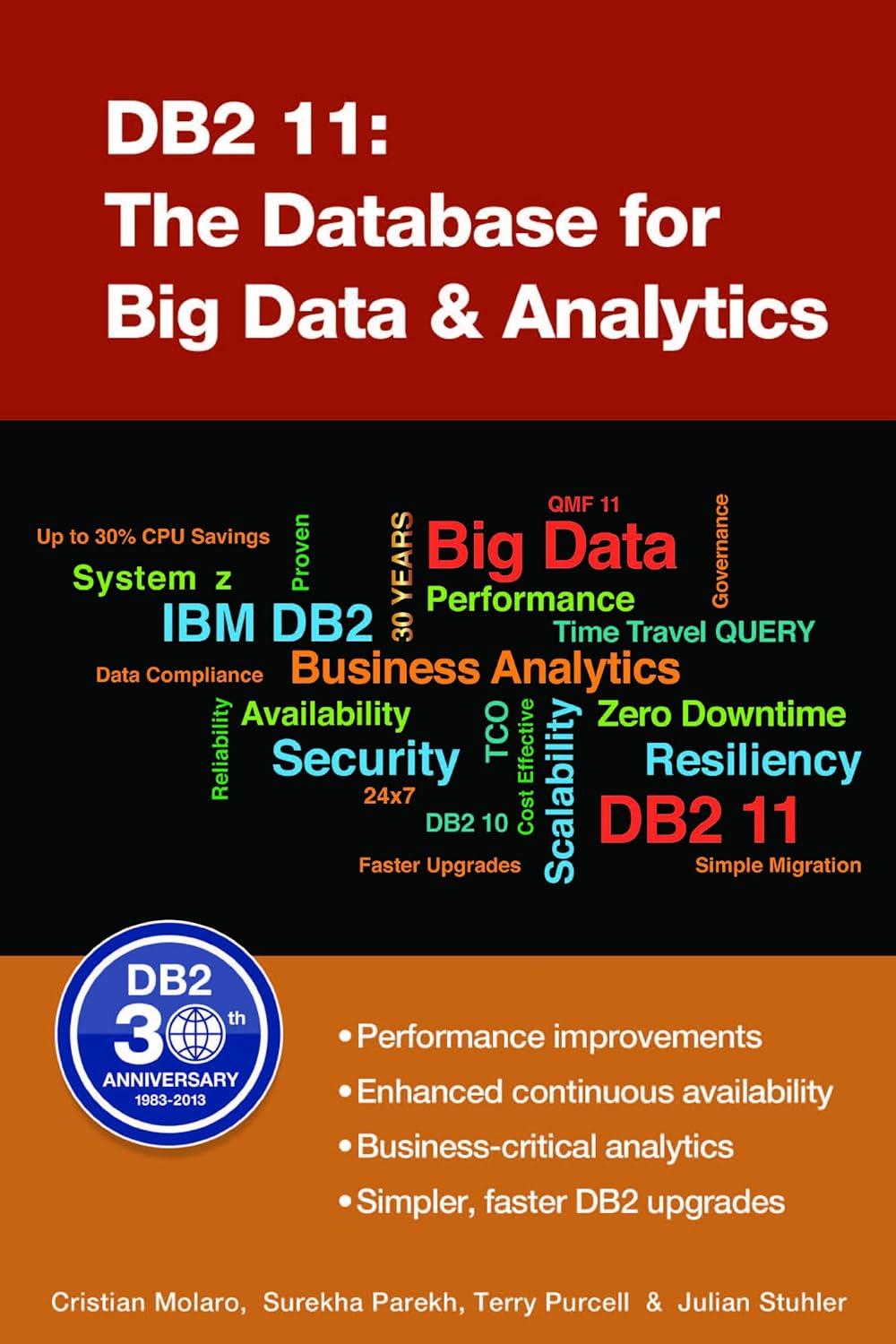Question
Hello, I am learning about diagrams and need help with the following scenario, thank you in advance. The System: The Thrive University (TU) wants to
Hello, I am learning about diagrams and need help with the following scenario, thank you in advance.
The System: The Thrive University (TU) wants to convert its library system into a new system to ensure more effective access to state-of-the-art books, periodicals, and proceedings while reducing operational costs. The current system consists of multiple unconnected library subsystems, one for each TU department. Each department subsystem is responsible for its own library according to department-specific procedures for book acquisition, user registration, loan management, bibliographical search and access to library resources. Such services are essentially manual in most TU libraries. They rely on card indexes maintained by library staff according to some keyword based classification scheme. Such schemes are specific to each department. A few departments are using rudimentary file-based software written by their members.
Some of the complaints about the current system as reported by university authorities, library staff, department members or students include the following:
Unnecessary duplicate acquisition, by several departments, of infrequently accessed copies of books or proceedings that are relevant to more than one department.
Unnecessary subscription, by several departments, to expensive journals that are relevant to more than one department.
Acquisition of books or proceedings of marginal interest to the university, which could be borrowed from other universities with which TU has an agreement.
Subscription to journals of marginal interest to the university, which could be accessed in other universities with which TU has an agreement.
Unavailability of requested books, for a variety of reasons such as department budget restrictions, excessive borrowing by the same user, lack of enforcement rules limiting loan periods, loss or stealing of book copies and so on.
Unavailability of journal issues while they are being bound into yearly volumes.
Lack of traceability to previous borrowers when books, proceedings, or journal volumes are found to be damaged.
Inaccuracy of card indexes, e.g. a book is stated as being available whereas it is not found at the appropriate place in the shelves.
Bibliographical search restricted to library opening hours.
Slow, tedious bibliographical search due to manipulation of card indexes.
Inaccurate search results, due to poor classification of books, journals or proceedings within departments.
Incomplete or ineffective search results, due to relevant books, journals or proceedings being indexed in other TU department libraries, or unavailable at TU.
The new TU library system should address such problems through a software-based solution integrating all department libraries. The new system should interoperate with library systems from partner universities. It should provide interactive online facilities for book acquisition, user registration, loan management, bibliographical search and book reservation. Access to such facilities should be restricted to specific user categories, according to authorization rules specific to each facility.
The new system should take advantage of opportunities provided by new technologies. In particular, it should support subscriptions to e-journals, provide access to foreign digital libraries (under specific conditions), support e-mail communication between staff and users, enable bibliographical search from anywhere at any time, and provide a Web-based interface for book e-seller comparison, selection, and order submission.
Show three possible scenarios of interaction between a library patron and the library system through message sequence charts (interaction diagram/event trace diagram). Additionally explain in text each scenario that you're describing.
Step by Step Solution
There are 3 Steps involved in it
Step: 1

Get Instant Access to Expert-Tailored Solutions
See step-by-step solutions with expert insights and AI powered tools for academic success
Step: 2

Step: 3

Ace Your Homework with AI
Get the answers you need in no time with our AI-driven, step-by-step assistance
Get Started


